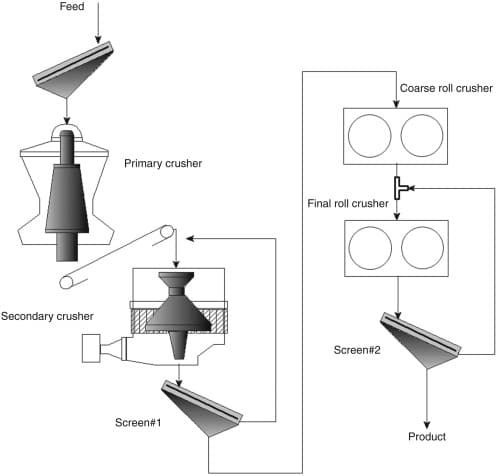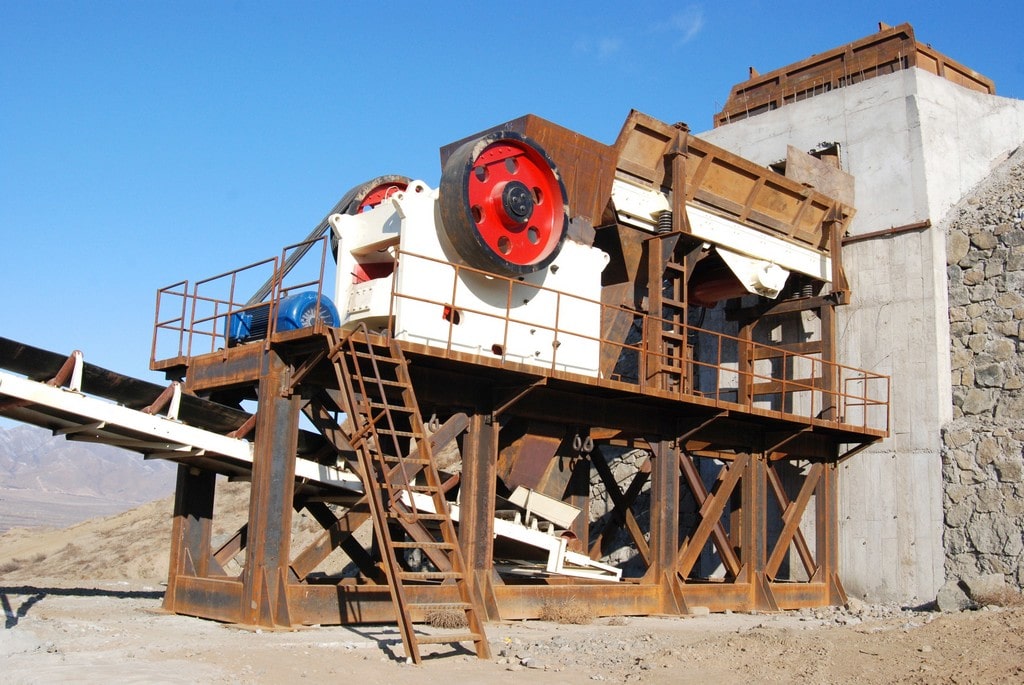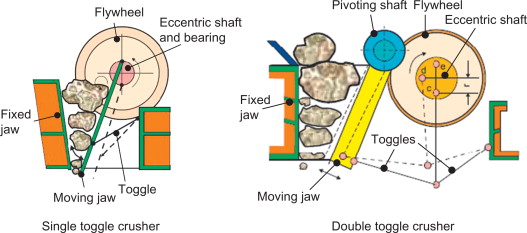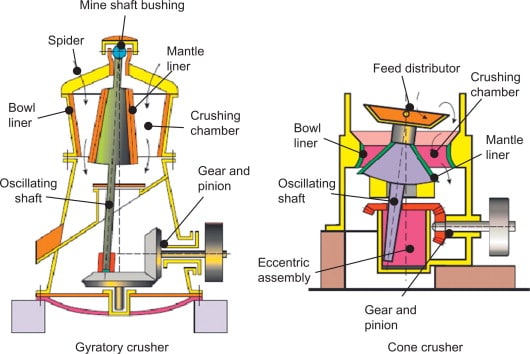How you select the best primary crusher from all of the available primary crushers is required a great deal of design based on the mining plan and operation input. Usually, capacity, feed size, product size, rock compressive strength, abrasion index and mobility of crusher are considering as criteria, and in practice usage, gyratory, double toggle jaw crusher, single toggle jaw crusher, high-speed roll crusher, low-speed sizer, impactor crusher, hammer crusher and feeder breaker crushers are often considering as alternatives selections.

To select the most suitable primary crusher for your plant, here are the most important questions you need to ask yourself and get clear answers before buying the equipment:
- What’s the material you are going to handle, and what are their characteristics?
- What’s your average hourly or daily capacity requirement? and do you have plans to extend your capacity in the nearly future?
- What’s the product size you need and the detail of the crusher discharge setting and it’s crushing ratio.
- What’s the type and size of your quarry equipment?
- What method did you employ in drilling and blasting?
- What’s the method used in feeding the crusher? By trucks or by conveyors.
Among those questions, the first three questions should and almost matter the most before a primary crusher station is taken up, at least, for most situations these three factors vital a lot. while in some cases, such as building a new primary crusher station or setting up a new primary crusher, then you properly should also take the last three factors into consideration. The primary crushing unit is closely related to quarrying or mining operations, and the best results can only be achieved by carefully selecting all equipment according to the overall operating plan.
Characteristic of materials to crush
The characteristic of rocks or ores you are going to crush include the geological classification of the rock, its physical structure, and also its chemical analysis (usually concerned the abrasive constituents), and at least a qualitative evaluation of its resistance to crushing that is, whether soft, medium, hard, or very hard and tough. Frequently such information may be obtained from contiguous deposits that are being operated; sometimes the values must be arrived at by laboratory tests. It is never safe to make blanket assumptions, even on such material as limestone, which can sometimes prove to be quite tough, as well as to contain significant amounts of abrasive silica.
Crusher capacity
The significance of this factor is so obvious. because in order to meet your standpoint of the minimum requirement, it is of course closely tied up with product size, or crusher setting. But the primary crusher should never be chosen solely on the basis of capacity; it should never be selected with a view to just meeting the average capacity required to feed the rest of the crushing plant.
In the average quarry operation, the rocks or mineral from the quarry were transported by trucks or conveyors, if these operating delays for a while would cut-off the feeding balance of the crushing plant, so if the plant as a whole want to maintain its rated average output, these departments must be capable of making up for such interruptions, and they can only do this if they have reserve capacity over and above the average requirement. Also, in practice, a crusher whose crushing rating just equals the average plant requirement would have no reserve to compensate for the conditions we have outlined. For the average quarry operation, this reserve should be not less than 25 percent, and preferably about 50 percent.
Choose which type of crusher
Crushers are machines that use a rigid surface to compress and break large rocks into smaller rocks, they come in many varieties, such as Jaw crusher, Gyratory crusher, Cone crusher, impact crusher, etc. usually, the choice of a primary breaker is dependent as much on the size of the feed as on the hourly tonnage.
Jaw crushers are mainly used as primary crushers to produce material that can be transported by belt conveyors to the next crushing stages. The crushing process takes place between a fixed jaw and a moving jaw. The moving jaw dies are mounted on a pitman that has a reciprocating motion. The jaw dies must be replaced regularly due to wear. there are two basic types of jaw crushers: single toggle and double toggle. In the single toggle jaw crusher, an eccentric shaft is installed on the top of the crusher. Shaft rotation causes, along with the toggle plate, a compressive action of the moving jaw. A double toggle crusher has, basically, two shafts and two toggle plates. The first shaft is a pivoting shaft on the top of the crusher, while the other is an eccentric shaft that drives both toggle plates. The moving jaw has a pure reciprocating motion toward the fixed jaw. The crushing force is doubled compared to single toggle crushers and it can crush very hard ores. The jaw crusher is reliable and robust and therefore quite popular in primary crushing plants. The capacity of jaw crushers is limited, so they are typically used for small or medium projects up to approximately 1600 t/h. Vibrating screens are often placed ahead of the jaw crushers to remove undersize material, or scalp the feed, and thereby increase the capacity of the primary crushing operation.
Primary gyratory crushers are used in the primary crushing stage. Compared to the cone type crusher, a gyratory crusher has a crushing chamber designed to accept feed material of a relatively large size in relation to the mantle diameter. The primary gyratory crusher offers high capacity thanks to its generously dimensioned circular discharge opening (which provides a much larger area than that of the jaw crusher) and the continuous operation principle (while the reciprocating motion of the jaw crusher produces a batch crushing action). The gyratory crusher has capacities starting from 1200 to above 5000 t/h. To have a feed opening corresponding to that of a jaw crusher, the primary gyratory crusher must be much taller and heavier. Therefore, primary gyratories require quite a massive foundation.
The cone crusher is a modified gyratory crusher. The essential difference is that the shorter spindle of the cone crusher is not suspended, as in the gyratory, but is supported in a curved, universal bearing below the gyratory head or cone. Power is transmitted from the source to the countershaft to a V-belt or direct drive. The countershaft has a bevel pinion pressed and keyed to it and drives the gear on the eccentric assembly. The eccentric assembly has a tapered, offset bore and provides the means whereby the head and main shaft follow an eccentric path during each cycle of rotation. Cone crushers are used for intermediate and fine crushing after primary crushing. The key factor for the performance of a cone type secondary crusher is the profile of the crushing chamber or cavity. Therefore, there is normally a range of standard cavities available for each crusher, to allow selection of the appropriate cavity for the feed material in question.
In conclusion, the choice of a primary crusher is an individual problem for every installation of different mining plants. The type of mining and the regularity, size, and rate at which the ore is delivered are the main determining factors, but you should take all local conditions into consideration before making a decision.



